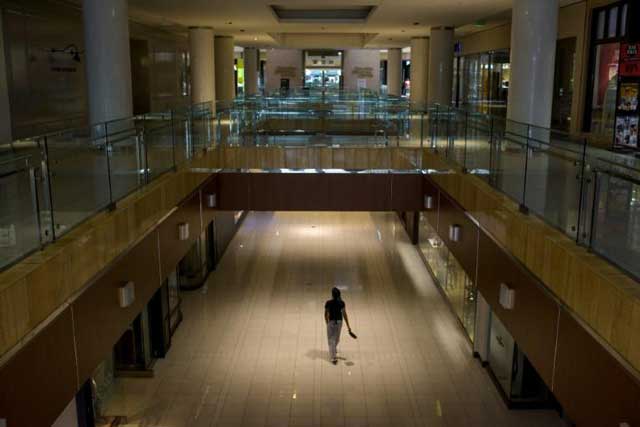
New York, United States | AFP | As they gradually reopen, US shopping malls are requiring masks and implementing social distancing policies in hopes of convincing customers that they can shop safely in the coronavirus era.
But these once-dominant shopping behemoths are in survival mode following lengthy pandemic shutdowns that have precipitated retail bankruptcies and stores unable to pay rent.
Each day the COVID-19 crisis seemingly brings fresh carnage to the US retail landscape.
The owner of lingerie chain Victoria’s Secret on Thursday announced it will shutter 250 stores in the United States and Canada, and warned more closures are likely in the next two years.
And Macys has projected a first-quarter loss of around $1 billion, suggesting more belt-tightening for a mall anchor store that already announced 125 store closures in February even before the coronavirus crisis.
The retail industry was struggling long before COVID-19 hit, weeding out brick-and-mortar stores that were steadily losing market share to e-commerce, and that spawned a wave of mall closures and the appearance of “zombie malls” with almost no stores.
Analysts expect those trends to accelerate.
“Covid is pulling forward several years of retailer fallout,” Green Street Advisors said in a report, predicting more than half of mall-based department stores would close by 2021.
That report was published April 28, just ahead of bankruptcy announcements by J. Crew, Neiman Marcus and JC Penney.
With more than 800 stores, JC Penney has been an especially important presence at US malls. Most of the locations are expected to shut down as the company reorganizes.
– Wave of litigation? –
Aside from the immediate financial hit from the loss of stores, malls face another drag from “co-tenancy” clauses in many leases that permit secondary mall tenants to demand rent relief when a shopping center loses multiple anchor stores.
And renters also could cite “force majeure” or “Act of God” clauses in many contracts to justify non-payment of rent, potentially leading to a huge wave of litigation.
Retail Properties of America, a Maryland-based real estate investment trust that owns more than 100 shopping centers and malls, collected just 52 percent of its April rent, including less than 10 percent from apparel chains, book stores and movie theaters.
Shane Garrison, chief operating officer for RPAI, said the company is discussing short-term lease modifications on a tenant-by-tenant basis with restaurants — another industry with an uncertain outlook.
“To the extent that they are willing to put that foot forward and be transparent and help us understand the scope of the ask, we’re certainly willing to listen,” Garrison said on a May 6 earnings conference call.
“To the extent they are not, we really question viability,” he said.
Acadia Realty Trust, a New York based mall operator, received about 50 percent of its April rent, with “essential” stores such as Target and Trader Joe’s able to pay.
The other 50 percent includes a number of up-and-coming brands like hip eyeglasses chain Warby Parker that are “young but exciting,” said Chief Executive Kenneth Bernstein, who estimated that only five to 10 percent of the portfolio were weak “watch list” tenants.
“We’re finding most retailers to be realistic and reasonable,” Bernstein said in a conference call this month.
– Will consumers consume? –
Nick Shields, a senior analyst at research consultancy Third Bridge, predicted many second- and third-tier US malls will not survive the current crisis.
Better-rated malls with popular brands like Apple and Nike will do better, he predicted, though the hit to real estate companies from lost rent will be “significant.”
Once the economy reopens, analysts expect stores to benefit somewhat from pent-up demand from consumers who have been shut at home.
But navigating through a largely empty mall with many closed stores amid an omnipresence of masks and the smell of bleach may put off some shoppers.
“The big question is whether consumers are going to be willing to go back into a large inside facility anytime soon,” Shields said, and it could be months or longer before consumers feel comfortable stepping into a dressing room.
Sales at Mignon Faget’s three Louisiana mall stores have been slower than usual since reopening earlier this month, said Chief Operating Officer Maghan Oroszi.
The New Orleans jeweler has managed to offset the hit from lost brick-and-mortar sales through a spike in online sales, while a forgivable loan under the government’s Paycheck Protection Program has helped it stay current on rent, Oroszi said.
But the dimming employment picture has sharpened questions about whether the company needs as much of a brick-and-mortar presence.
“Is there going to be another wave of economic impacts?” Oroszi said. “We may not need to so many physical stores to be able to survive.”
 The Independent Uganda: You get the Truth we Pay the Price
The Independent Uganda: You get the Truth we Pay the Price



